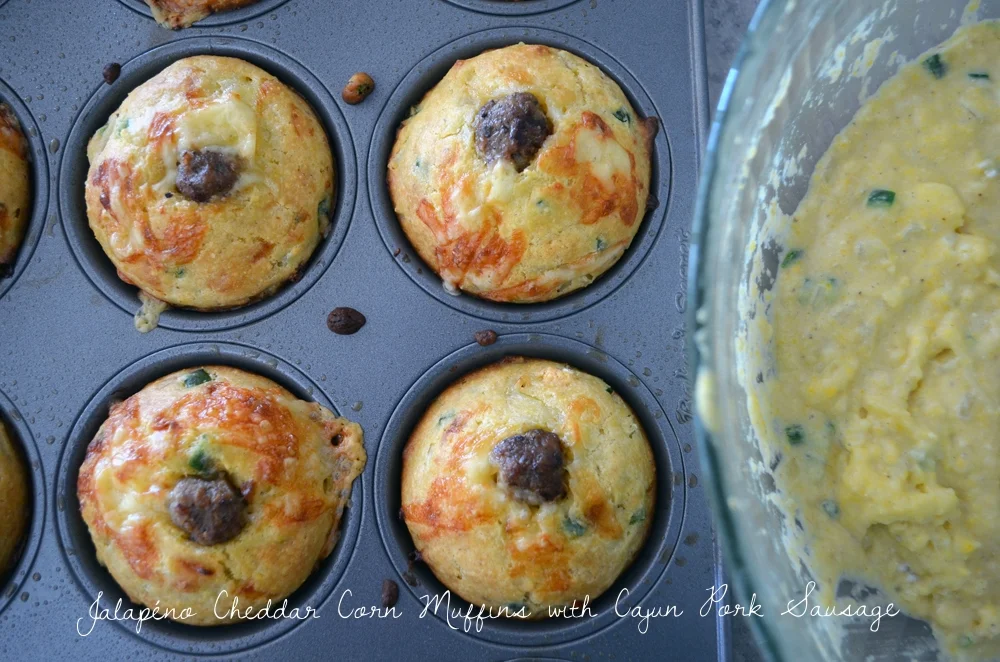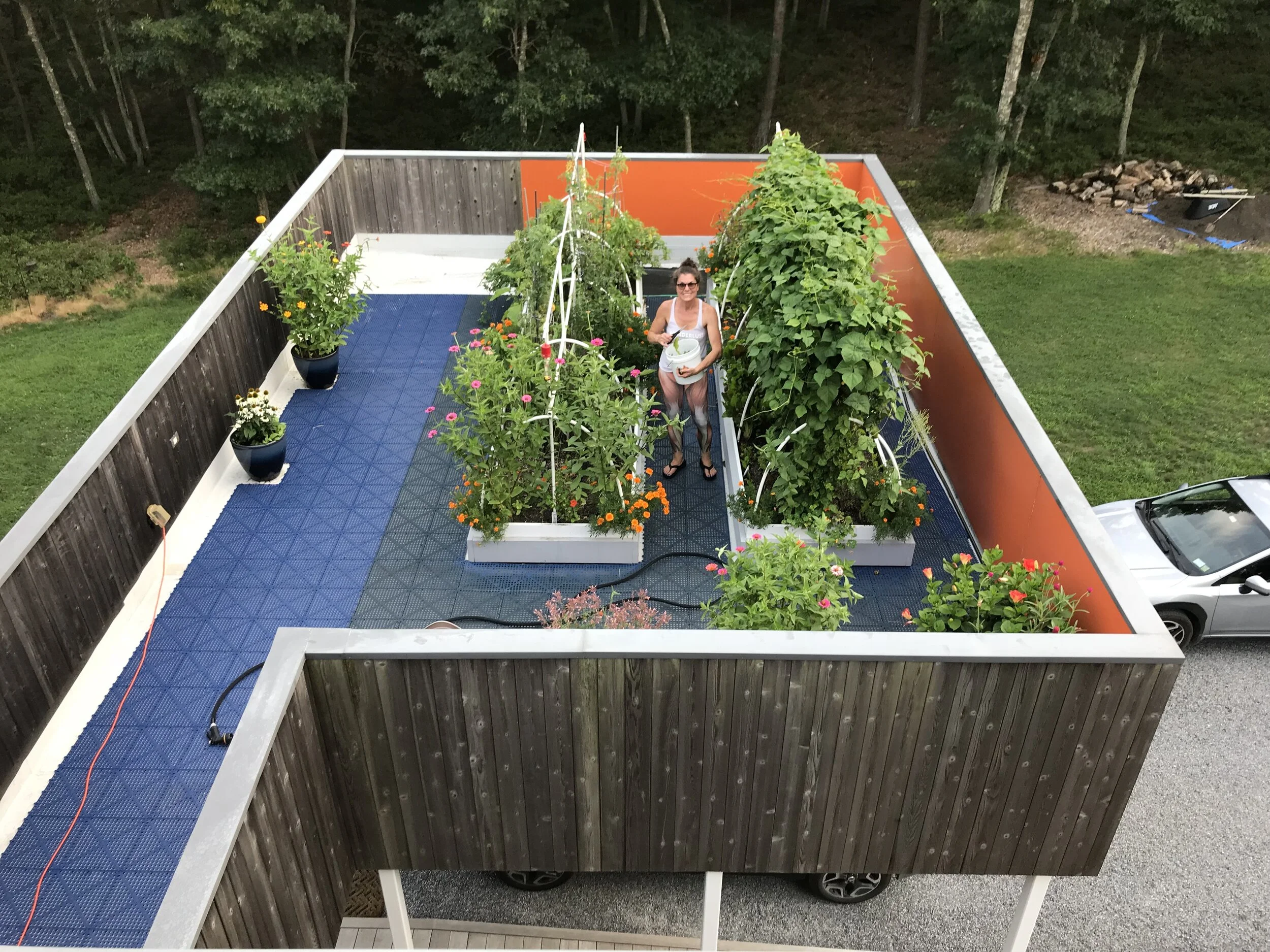Long Island Inspires My Winning Cassoulet
/I am proud to say, I earned 1st place honors for both judges' and people’s choice awards at the 5th Annual Cassoulet Cookoff at Jimmy’s No. 43 in Manhattan. This has been a few years in the making, having competed the last 2 years as Laura Luciano from 18th street and now as the out east foodie. In years past, I have prompted many cassoulet aficionados to twirl their long moustache over my less traditional cassoulet, featuring a duck blueberry sausage.
My first introduction to making a cassoulet was in 2009, a few days before New Years Eve, at my aunt and uncle’s house in Weston, Connecticut. On arrival, she handed my husband Chris and I the Dean & DeLuca Cookbook and said, “We are making a cassoulet, you both need to figure this out since you are the foodies in the family.” Sad to say, we had no idea what a cassoulet was. What kind of foodies were we, not to know the most coveted dish from the south of France? The combination of my ambition and Chris’ patience led us down the Cassoulet Trail; from Toulouse to Narbonne ringing in the New Year with our first homemade cassoulet.
I frequently reflect on our first time making this French classic. Since then, there has been a personal need to perfect and celebrate it.
In 2010, shortly after my aunt and uncle’s imposed introduction to cassoulet, I attended the 2nd Annual Jimmy’s No. 43 Cassoulet Cookoff. Originally, I thought I could pull off the task of competing that year, but my husband felt I would be better suited in eating my way through the competition. He was absolutely right.
Not only did I consume a variety of interesting cassoulets but also learned a valuable lesson in listening to the chef’s personal stories and intentions behind each dish.
Over the years, cassoulet had become a dish that started to define my intentions— telling a story about a time and place in my life. This year my story was inspired by Long Island; using fowl from Crescent Duck Farm in Aquebogue, microgreens from Koppert Cress, USA in Cutchogue and due to still having roots in Manhattan, Flying Pigs Farm from the Union Square Greenmarket.
There is no one single recipe for cassoulet. Some of you, may have a recipe passed down through the generations, or have been diligently working on your recipes like myself to perfect. Your story and personal touch is what will make your cassoulet so special and I hope my recipe can help you along the way.
My Winning Cassoulet Recipe
Making a cassoulet is not for the faint of hearts and needs the time and love for it to achieve balance and a poetic flavor. The process of making a cassoulet can begin a few weeks in advance to save yourself some time in the long run. My recipe yields for 12. You can half this recipe, but considering the nurturing that this dish deserves you might as well make enough to have a party. I am sure your family and friends will be forever thankful.
Duck Leg Confit
The confit is prepared in a centuries-old process of preservation that consists of salt curing a piece of meat (generally duck, goose or pork) and then poaching it in its own fat and refrigerating. This process is more time-consuming than daunting.
Can be done two weeks in advance.
Ingredients
2/3 cup kosher salt
note: If you cannot get ahold of fresh duck legs or duck fat locally, there are resources online where you can order these duck products.
Directions
- mash 4 garlic cloves to a paste with a pinch of kosher salt. Then stir together paste, 2/3 cup of kosher salt, shallots, thyme, bay leaves, crushed juniper berries, and the four-spice blend in a large bowl. Add duck legs and toss to coat. Marinate, covered and chilled in a large pan, for 2 days.
- Wipe off marinade with paper towels. Thoroughly remove all the spices and herbs the best you can.
- Trim off 1/4 inch from top of garlic head and stick 2 whole cloves into head.
- Melt duck fat in a wide large pot over low heat. Once fat is translucent place duck legs and garlic head in. Cook uncovered, over low heat until fat registers approximately 190ºF, about 1 hour. You will need a deep-fat thermometer for this. Continue to cook duck, maintaining a temperature of 190 to 210º, for another 2-3 hours more or until a wooden bakers pick or toothpick slides easily into thighs.
- Transfer duck with a slotted spoon to a large bowl and reserve the garlic minus the cloves for the pork broth puree under the braised pork section.
- Slowly pour duck fat through a fine-mesh sieve into a large deep bowl, leaving any meat juices in the bottom of pot. Pour strained fat over duck legs to cover by 1 inch.
- Cool to room temperature, about 2 hours. Once chilled at room temperature place in refrigerator covered.
- The duck legs should be kept in duck fat for at least two weeks before using in the cassoulet.
Duck/Turkey Stock
One of the key components to making a great cassoulet is spending the time to make your own stock. You can prepare stock weeks in advance and freeze for a later use to save you some time.
Can be done weeks in advance.
Ingredients
Directions
- Remove the duck confit legs from the fat by placing the bowl over a pan of low simmering water. Once the legs release place on a dish to let the fat drip off. Strain the fat through a sieve and reserve the fat for the cassoulet in an airtight container.
- Remove the duck skin and meat from the legs. The duck skin will be used to make duck cracklings for the breadcrumbs and the meat will be used to go into the cassoulet when you are ready to assemble.
- Place the duck legs and turkey backbones in a large roasting pan covered and sprinkle with kosher salt and pepper. Bake at 350º for 1 hour or until the bones are golden brown.
- Place the roasted bones and its juices into the stockpot with water, herbs and vegetables.
- Bring the water up to a boil. Then place on a low simmer for 2 hours, partially covered.
- Drain the stock through a sieve and place in a large pot on reserve for the cassoulet or freeze to use at a later time.
note: If you decide to use the duck confit bones for the stock you need to do this the same day you make your beans. If you rather prepare the stock weeks in advance substitute with either turkey, chicken or better yet a duck carcass.
Beans
It is important to source beans which you know are fresh and cared for. Rancho Gordo makes fabulous heirloom beans. I used the Flageolet, however I am aware they now have a Cassoulet bean which I am sure would be perfect, hence the name. You can also substitute with a medium bean like Tarbais.
Can be done 4 days in advance.
Ingredients
Directions
- Rinse the beans thoroughly with cold water and remove any debris. In a bowl, cover the beans with 2 inches of water and soak for approximately 6 hours. Be sure to check the beans frequently as the water absorbs rather quickly and you may need to add more in that timeframe.
- Rinse the beans and place in a large stockpot with: 15 cups of the stock, the garni bouquet, garlic cloves, whole French pancetta, the onion studded with cloves and salt. Bring to a boil, then simmer over low heat for about 1 hour.You want the beans to be slightly undercooked. Depending on the freshness of your beans will determine how long you should cook them. The Rancho Gordo Flageolet were perfect at 1 hour.
- Remove and discard the garni bouquet and onion with studded cloves. Set-aside the pancetta for the vegetables and garlic for the pork broth puree sections.
- Strain the beans and reserve the cooking liquid for the components to make cassoulet.
note: A 20 quart stockpot worked best to cook the beans. Refrigerate the beans and reserve the cooking liquid in a separate container. You will need to take the beans out when you begin the vegetables.
Braised Pork Butt
My secret is within this part of the recipe. Remember, it is all about building depth of flavors.
Can be done 1 day before
Ingredients
Directions
- Preheat oven to 325º. Pat the pork dry with paper towels and season with salt and pepper. Remove excess fat and reserve to the make the pork cracklings for the breadcrumbs.
- In a large Dutch oven, over medium-high heat
brown the pork on all sides until golden. Transfer the pork to a
plate.
- Add the onion, celery, and carrot to the Dutch oven and sweat until softened for 5 minutes. Add the garlic and sweat another 2 minutes. Stir in the tomato paste and cook for 3 minutes.
- Whisk in the Cognac and reduce it by half. Return the pork to the Dutch oven and place the stock, parsley and bay leaves in. Stock should sit just below the meat. Cover the pot and place in the oven until the meat is fork tender, about 3 hours.
- Remove the Pork from the Dutch oven and set-aside for cassoulet assembly. Dispose of the parsley. Put the pork broth and vegetables
in a bowl and let cool before skimming off as much fat as possible.
This is the part where I reveal my secret. - In a small size food processor place in the pork broth and vegetables.
- Remember the whole garlic which was reserved from the duck confit? Squeeze the garlic in and place the 10 garlic cloves that were reserved from the beans in too. Place 2 tablespoons of duck fat and ¼ cup of the reserved bean-cooking liquid in the processor and puree. Set-aside to fold into the beans.
Sausages
This can be done 1 day before
Ingredients
Directions
- Add 1 tablespoon of duck fat in a 12-inch skillet over medium-heat and brown the sausages in batches. They don’t need to be fully cooked at this point. Set the sausages aside to cool. When at room temperature cut the sausages into ½-inch discs for cassoulet assembly.
note: I made my own duck sausage, however you can order duck sausage online
or check with your local farmers market on who may carry it. If you cannot get duck sausage simply replace with more sweet italian.
Vegetables
This can be done 1 day before
Ingredients
3/8-inch dice, 2 cups
Note: I used a 20 quart stockpot to cook the beans and used this same pot to fold the vegetable mixture. Your stockpot should have enough room to fold the bean mixture so you do not bruise the beans.
Directions
- Heat 1 tablespoon of the duck fat in a 12-inch skillet over medium-low heat. Add the pancetta and cook until browned and crisp and most of the fat has been rendered, about 15 minutes. Transfer to a bowl and discard the fat.
- Add 1 tablespoon of the duck fat to the skillet, raise the heat to medium-high and add the carrots; season with salt and pepper. Cook until barely tender and golden around the edges, about 5 minutes. Transfer the carrots to the bowl with the pancetta.
- Add 1 tablespoon of the duck fat to the skillet, and the onions. Season with salt and pepper. Reduce heat to medium-low, stirring and scraping the pan frequently, until
the onions are softened and starting to caramelize, about 15 minutes. Add the
minced garlic and cook for an additional 2 minutes. Add the tomato paste to the
onions and cook for 3 minutes. Add ½ cup of the stock to deglaze the skillet.
At this point you are ready to fold the reserved pork broth and vegetable puree into the bean stockpot. - Place the deglazed onions, garlic and tomato paste into the bean mixture and fold. Do the same thing with the pancetta and carrots. Set-aside for the cassoulet assembly.
Breadcrumbs
Making the breadcrumbs and pork / duck cracklings can be done the day before. Combine all your breadcrumb ingredients the day you serve your cassoulet.
Ingredients
1/2 of one lemon juiced
Directions
- Preheat the oven to 350°F.
- Over medium-high heat render down the pork fat and duck skin to a crackling state, about 15 minutes. The pork and duck skin should get golden and crisp, but do not let it burn. Once done set-aside. Chop into small pieces when cool.
- Cut the bread into very small pieces and leave out to get stale for 3 days. Place bread in a food processor and pulse until the crumb is coarse but not fine, about 5 cups.
- Place bread crumbs in a bowl with the duck fat, lemon juice, cracklings, salt and pepper to taste and mix.
- Pour the breadcrumb mixture on a cookie sheet and toast in the oven until golden brown, for 5 minutes. Check occasionally that it does not burn.
- Once the breadcrumb is cooled place in the chopped microgreens and gently fold. set-aside for the cassoulet assembly.
Note: You can substitute the Koppert Cress microgreens for Italian parsley as well as store bought unseasoned breadcrumbs if you desire.
Cassoulet Assembly
Choose a vessel for the cassoulet: Enameled cast iron pots work best, known as Dutch ovens. I used what I had on hand: two Le Creusets; one 7 ¼ quart round and 6 ¾ quart oval French ovens. Le Creuset and other brands carry larger size pots, but I do not recommend handling a pot that heavy for this entire recipe. The weight alone would give the average person a hernia, not to mention the risk of burning yourself. If you end up halving the recipe, one 7 ¼ quart would work just fine.
Preheat the oven to 325°.
Lightly grease the pot with
duck fat on both bottom and sides and spoon half the bean mixture in an even layer.
Arrange the sausages, pork butt, and duck meat evenly over the beans. Top with the rest of the beans. Pour in the bean-cooking liquid until the level comes just below the beans—you should be able to see the liquid but it shouldn’t cover the beans. Drizzle 3 tablespoons of duck fat over the top.
Cover and bake until hot and bubbling for about 2 hours. Check occasionally to make certain the beans are not drying out. Then cook for an additional ½ hour with the cover off.
Note: If you would like to bake the breadcrumb into the cassoulet, simply sprinkle the crumb on top of the cassoulet after 2 hours of cooking. Then continue baking the cassoulet with the lid off for another ½ hour. I prefer to sprinkle the crumb on top when serving. You also can eliminate the breadcrumb altogether.
Please let me know how your Cassoulets turnout. I am sure some of you may have questions about this recipe, it is a long one. If you do, please submit your questions below so everyone will benefit from them.
May the God of Occitan cuisine be with you.






























